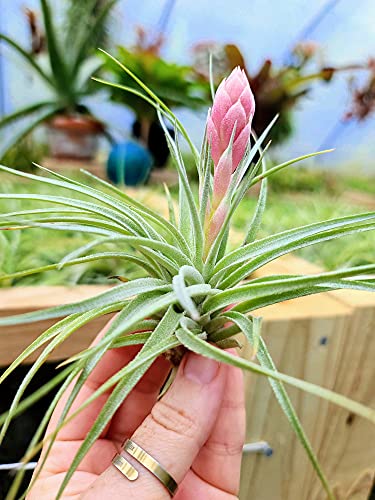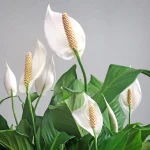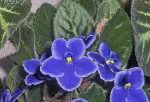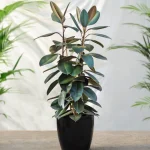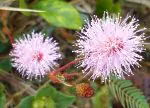This post contains affiliate links. If you buy something from one of our links we may earn a commission. Thanks
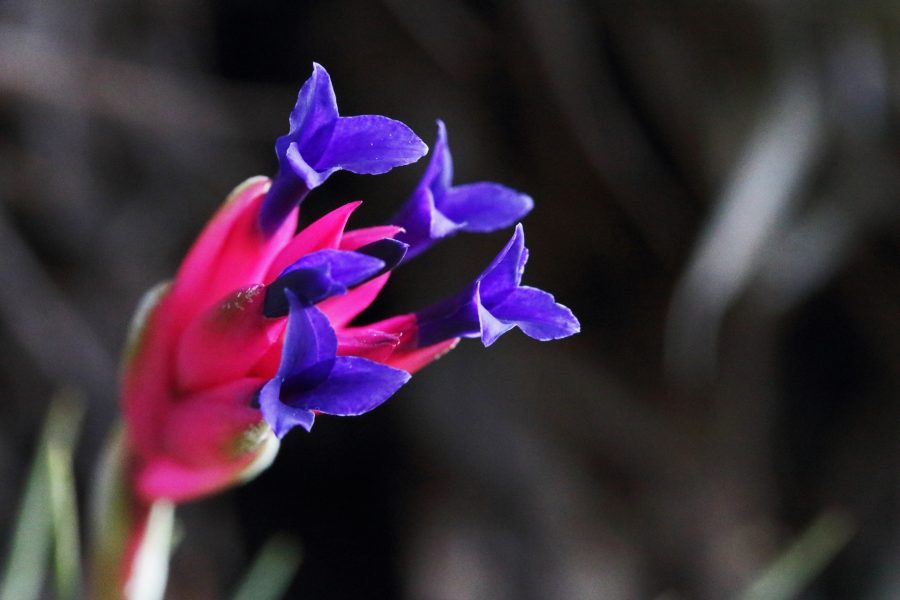
Discover the secrets of how to take care of air plants with our easy-to-follow guide! Unleash your creativity and grow a thriving, low-maintenance collection.
To take care of air plants, soak them in water for 30 minutes weekly, then shake off excess water and let them dry upside down. Place them in a location with indirect sunlight or under artificial light. No soil is needed, and periodic misting can help maintain humidity. Fertilize sparingly with air plant-specific fertilizer.
Welcome, plant enthusiasts! If you’ve ever found yourself fascinated by the unique world of air plants but felt unsure about their care, you’ve come to the right place.
In this guide, we’ll dive into the delightful realm of how to take care of air plants, helping you transform any space into a lush, low-maintenance haven.
We will give you air plant care tips for your new air plants to help them thrive. So let’s roll up our sleeves, unleash our creativity, and get ready to embark on this botanical adventure together!
How to Take Care of Air Plants
Are you intrigued by the enchanting world of air plants and eager to learn the ropes?
Well, you’re in for a treat! We’ll give you a sneak peek into the charming and unusual life of air plants, and why giving them proper care is essential for their growth.
Stay tuned as we explore this captivating topic together and turn you into an air plant caretaker extraordinaire! Let’s get this green party started, shall we?
A Glimpse into the World of Air Plants
Air plants, also known as Tillandsia, are unique and captivating little creatures that have captured the hearts of plant enthusiasts worldwide.
What sets them apart from most other house plants or other tropical plants is their ability to grow and thrive without soil. That’s right!
These little green wonders absorb water and nutrients through their leaves, making them incredibly versatile and adaptable.
They are epiphytes. In their native habitats they can be found growing on tree branches, rocks, or even on other plants.
With over 600 species to choose from, air plants come in various shapes, sizes, and colors, allowing you to choose from many varieties of air plants and create a stunning living display that reflects your personality and style.
According to Wikipedia
Tillandsia is a genus of around 650 species of evergreen, perennial flowering plants in the family Bromeliaceae, native to the forests, mountains and deserts of northern Mexico and south-eastern United States, Mesoamerica and the Caribbean to mid Argentina. Their leaves, more or less silvery in color, are covered with specialized cells (trichomes) capable of rapidly absorbing water that gathers on them.
The Key to Air Plant Success: Proper Care
While air plants might be low-maintenance compared to their soil-dwelling counterparts, they still require the right kind of attention to ensure they stay happy and healthy.
Proper care is essential for promoting growth, maintaining vibrant colors, and encouraging blooming and reproduction.
By understanding the specific needs of these fascinating plants and providing them with the right environment, you can create a thriving air plant collection that will bring joy and greenery to your space for years to come.
How to take care of air plants indoors
 Alright, indoor plant enthusiasts, let’s dive into the world of air plants and learn how to keep them happy and thriving within the cozy confines of your home!
Alright, indoor plant enthusiasts, let’s dive into the world of air plants and learn how to keep them happy and thriving within the cozy confines of your home!
Taking care of air plants indoors can be a breeze once you know the ins and outs of their unique needs.
In this section, we’ll explore the ideal locations and conditions, as well as the importance of air circulation and temperature, to ensure your air plants flourish indoors.
So, get ready to turn your living space into a veritable indoor garden paradise with these easy-to-follow tips and tricks!
Picking the Perfect Spot: Ideal Locations and Conditions
When it comes to giving your air plants a happy home indoors, location is key.
Air plants thrive in well-lit areas with indirect sunlight. Too much direct sun can scorch their delicate leaves.
Placing them near a window with filtered bright light or a bit of shade is a great idea. East or west-facing windows are often ideal for providing just the right amount of light.
Don’t have much natural light? No worries! Air plants can also grow under artificial light, such as fluorescent bulbs or LED grow lights. Just make sure to keep them within a reasonable distance to ensure they get enough exposure.
Keep it Fresh: Air Circulation and Temperature
Air plants love a good breeze, so ensuring proper air circulation is crucial for their well-being.
Good airflow helps them dry out after watering, preventing potential rot or fungal issues.
You can achieve this by placing your air plants near a fan, an open window, or in a room with plenty of air movement.
Be mindful of extreme temperatures, though! Air plants prefer a cozy temperature range of 50-90°F (10-32°C).
Be sure to protect them from cold drafts or sweltering heat, which could cause damage to their delicate foliage.
By providing the right balance of air circulation and temperature, you’ll set your air plants up for success!
Do air plants need sun?
Hey there, sunshine! Let’s talk about the role of sunlight in the lives of our beloved air plants. You might be wondering, “Do air plants need sun?”
In this section, we’ll answer that question and delve into the light requirements for these captivating green friends.
We’ll also discuss the differences between indirect sunlight and artificial light to help you find the perfect balance for your air plant collection.
So, buckle up, and let’s shine some light on this fascinating topic together!
Illuminating the Facts: Light Requirements for Air Plants
Air plants, like all photosynthesizing organisms, need light to grow and thrive.
However, their light requirements can vary depending on the species. In general, air plants love bright indirect sunlight.
Too much direct sunlight can cause their leaves to burn or dry out, so it’s important to find a sweet spot where they receive enough light without being exposed to harsh rays.
A few hours of morning sunlight followed by indirect or filtered light throughout the day is usually ideal for most air plants.
If you need to use a south-facing window you can hang a sheer curtain to diffuse the light.
Keep an eye on your plants and adjust their light exposure if you notice any signs of stress, such as browning, curling, or bleaching of the leaves.
The Great Debate: Indirect Sunlight vs. Artificial Light
While natural sunlight is a great source of light for air plants, not everyone has access to ample sunlight in their living space.
Artificial light can come to the rescue! Fluorescent lights or LED grow lights can be used to provide your air plants with the light they need to flourish.
Position the plants about 6-24 inches away from the light source depending on the strength of the light. Generally LED lights will need to be further away.
Use a timer and aim for 12-14 hours of exposure per day to mimic the natural light cycle.
This way, you can create an optimal environment for your air plants, even if you’re short on sunshine.
Remember to monitor your plants for any signs of stress and adjust the light source accordingly.
Do air plants need soil?
Hey, soil-less plant fans! Let’s delve into one of the most intriguing aspects of air plants: their independence from the soil.
You might be asking, “Do air plants need soil?” In this section, we’ll explore the fascinating root system of these green wonders and how they manage to thrive without the need for soil.
We’ll also discuss alternative support systems that can help your air plants flourish.
So, get ready to be amazed by the incredible world of air plants and their unique soil-free lifestyle!
Rooted in Uniqueness: The Unique Root System of Air Plants
One of the most fascinating features of air plants is their ability to live without soil.
Instead of relying on roots to anchor themselves into the ground and absorb nutrients, air plants use their roots primarily for attaching themselves to various surfaces, like trees, rocks, or even other plants.
The real magic happens in their leaves, which are covered in tiny, hair-like structures called trichomes.
These trichomes absorb water and nutrients from the air, allowing air plants to thrive in a variety of environments without the need for soil.
Holding On Tight: Alternative Support Systems
Since air plants don’t require soil, they can be displayed in a myriad of creative ways. Some popular alternative support systems include:
Mounting on surfaces: Air plants can be attached to surfaces like driftwood, cork bark, or even decorative stones using non-toxic glue, wire, or fishing line.
Hanging displays: The best way to create visually stunning hanging gardens by suspending air plants with clear fishing line or attaching them to wireframes or macrame hangers.
Nestling in containers: Air plants can be placed in decorative containers like glass orbs, ceramic dishes, or even seashells, as long as they allow for proper air circulation.
By exploring various support systems, you can create a truly unique air plant display that reflects your style and personality.
How to water an air plant
Are you ready to dive into the world of air plant watering? Although these unique plants don’t require soil, they still need water to thrive.
In this section, we’ll explore different methods of watering air plants and help you find the perfect hydration routine for your green companions.
We’ll also discuss how often to water your air plants and how to recognize the signs of dehydration.
So, grab a glass of water for yourself and let’s get our air plants quenched and happy!
Quenching Thirst: Different Methods of Watering
When it comes to watering air plants, there are a couple of methods for proper watering you can choose from.
Let’s explore these hydration techniques to find the one that suits your plants best:
Misting: For air plants that prefer a more humid environment or when you’re short on time, misting can be a quick and easy solution.
Using a spray bottle filled with water, give your air plants a gentle mist, ensuring that their leaves are evenly covered.
Misting is especially useful for air plants in terrariums or mounted on surfaces where soaking isn’t feasible.
Soaking: Most air plants will appreciate a good soak to ensure they’re fully hydrated. Submerge your air plants in a bowl of water, making sure their leaves are entirely immersed. Soaking durations can vary depending on the species, but generally, 20-30 minutes once a week should suffice. Don’t forget about them and give them too much water. After soaking, gently shake off excess water and place them in a well-ventilated area to dry.
Staying Hydrated: Frequency and Signs of Dehydration
The frequency of watering your air plants depends on factors such as the species, your environment, and the season.
Generally, once a week should be sufficient, but air plants in drier or hotter climates might need more frequent watering.
Be sure to monitor your plants for signs of dehydration, such as curling, browning, or wrinkling leaves.
If you notice these symptoms, increase the frequency or duration of watering to help your plants bounce back.
Always use room temperature water as cold water can shock your plants.
Remember, overwatering can be just as detrimental as underwatering, so finding the right balance for your specific environment is essential for keeping your air plants happy and healthy.
Why tap water is bad for air plants
Tap water can be harmful to air plants for several reasons, primarily due to the presence of chemicals and minerals that may not be suitable for these delicate plants.
Let’s look at some of the main concerns for this type of water:
Chlorine and Chloramines: Tap water is often treated with chlorine or chloramines to disinfect it and make it safe for human consumption.
However, these chemicals can be harmful to air plants and may cause damage to their leaves or inhibit their ability to absorb nutrients.
Fluoride: Fluoride is another common additive in tap water, used to promote dental health.
Unfortunately, fluoride can be toxic to air plants, leading to leaf damage, discoloration, or even plant death.
Hard Water Minerals: In some areas, tap water can contain high levels of minerals like calcium, magnesium, and iron.
These minerals can build up on air plants’ leaves over time, interfering with their ability to absorb water and nutrients.
This buildup can result in stunted growth or other health issues.
To avoid these problems, it’s best to water your air plants with rain water, distilled water, and filtered water that’s free of chemicals and minerals.
If tap water is your only option, you can let it sit out for at lerast 24 hours to allow some of the chemicals to evaporate before using it to water your air plants.
However, this method may not remove all harmful substances, so using an alternative water source is still recommended when possible.
How to care for air plants in winter
Hey there, winter warriors! As the temperatures drop and the days get shorter, you might be wondering how to care for your air plants during the chilly months.
In this section, we’ll explore some useful tips and tricks to help your air plants stay healthy and happy throughout the winter season.
From adjusting their watering routine to providing extra light, we’ll guide you through the process of keeping your air plants cozy and comfortable during these frosty months.
So, grab a warm blanket, and let’s embark on this wintertime plant care journey together!
Winter Wonderland: Adjusting Light and Temperature
During the winter months, it’s essential to pay close attention to the light and temperature conditions of your air plants.
Here’s what you need to keep in mind:
Light: With shorter days and less sunlight, you may need to provide additional light for your air plants.
Consider placing them closer to windows or using artificial light sources, such as LED grow lights or fluorescent bulbs, to make up for the reduced natural light.
Temperature: While most air plants can tolerate a wide range of temperatures, they’re not big fans of frosty conditions.
Keep your air plants away from cold drafts and windows that may experience temperature fluctuations.
Ideally, maintain a temperature between 50-90°F (10-32°C) to keep your plants cozy and thriving.
Watering Frequency and Humidity
Winter air tends to be drier, so it’s crucial to adjust your air plants’ watering routine and maintain proper humidity levels:
Watering Frequency: During winter, you may need to water your air plants more frequently to combat the drier air.
Monitor your plants for signs of dehydration, such as curling or browning leaves, and adjust your watering schedule accordingly.
Keep in mind that soaking may be more beneficial during this time, as misting may not provide enough hydration.
Humidity: If your indoor environment gets too dry during the winter, consider using a humidifier to maintain a comfortable humidity level for your air plants.
A high humidity level of around 40-60% is usually ideal for most species. Be sure to monitor your plants and adjust the humidity as needed to keep them happy and healthy.
How to propagate air plants
Hey there, budding plant propagators! Are you ready to spread the love and grow your air plant collection?
In this section, we’ll dive into the exciting world of air plant propagation and explore how you can multiply your green family with ease.
We’ll discuss the natural process of producing pups, as well as how to separate and care for these adorable baby air plants.
So, roll up your sleeves, and let’s get started on this rewarding and fascinating journey of air plant propagation!
Baby on Board: Identifying When an Air Plant is Ready to Reproduce
Knowing when your air plant is ready to reproduce is essential for successful propagation.
As your air plant matures in its life cycle, keep an eye out for the following signs that indicate it’s ready to create some offspring:
Pups: Pups are baby air plants that grow at the base of the mother plant. Once a pup reaches about one-third to half the size of the mother plant, it’s usually ready to be separated and start life on its own.
Flowering: When an air plant flowers, it’s a sign that the plant has reached maturity and may soon produce pups. However, not all air plants will produce pups after flowering, and some might rely on seed production for propagation.
Plant Parenthood: Steps for Successful Propagation
Pups: When a pup is large enough to be separated from the base of the plant, carefully hold the base of the pup and gently twist or wiggle it to detach it from the parent.
Be cautious not to damage the delicate leaves during the process. Once separated, treat the pup as you would any other air plant, providing proper light, water, and air circulation to help it grow.
Flowering and Seed Production: Some air plants reproduce through seeds after flowering.
If your air plant has produced seed pods, you can harvest the seeds when the pods dry out and start to crack open.
Sow the seeds on a moistened surface, like a bed of sphagnum moss, and maintain a humid environment until the seedlings sprout.
This process is slower and more delicate than propagating through pups, but it can be an exciting way to grow new and unique air plant varieties.
By understanding the different methods of air plant propagation, you’ll be well on your way to expanding your collection and sharing the love of these amazing plants with others.
What species reproduce from seeds
While most air plant species (Tillandsia) can reproduce both sexually through seed production and asexually through pups, some species rely more on seed production for propagation.
It’s important to note that seed propagation is generally a slower process than pup propagation and can be more challenging to achieve.
Air plant species that are known to produce seeds include:
Tillandsia usneoides (Spanish Moss)
Tillandsia ionantha (Sky Plant)
Tillandsia bergeri
However, keep in mind that even species that produce seeds can also produce pups.
The frequency and propensity for seed production can vary among individual plants and environmental conditions.
If you want to try propagating air plants from seeds, pay close attention to the flowering and seed pod development of your plants, and be prepared for a more delicate and time-consuming process.
Mesic air plants
Are you ready to dive into the fascinating world of mesic air plants?
These unique plants originate from environments that are a bit more humid and receive slightly more rainfall than xeric air plants.
In this section, we’ll explore the characteristics of mesic air plants and discuss how their specific care requirements might differ from other types of air plants.
So, grab your watering can, and let’s get to know these lush, tropical beauties even better!
Lush and Lovely: Characteristics of Mesic Air Plants
Mesic air plants have some unique features that set them apart from other air plants:
Origins: Mesic air plants are found in environments with higher humidity and rainfall, such as tropical rainforests or cloud forests.
Leaves: They often have smoother, broader, and greener leaves compared to their xeric counterparts, which have more pronounced trichomes (the tiny, hair-like structures that help absorb water and nutrients).
Adaptations: Mesic air plants are well-adapted to thriving in shadier, more humid conditions, and they can tolerate less light than xeric species.
Tropical Care: Tips Specific to Mesic Air Plants
To keep your mesic air plants happy and healthy, consider these care tips tailored to their specific needs:
Watering: Due to their preference for more humid conditions, mesic air plants may require more frequent watering or misting compared to xeric species.
Light: As mesic air plants are adapted to shadier environments, they may not require as much light as xeric species. However, they still need bright, indirect light to thrive. Be cautious of direct sunlight, as it may cause their leaves to burn.
Humidity: To mimic their natural habitat, maintain a higher humidity level for mesic air plants. Use a humidifier or place them in a more humid area of your home, such as a bathroom or kitchen.
Meet the Mesic Crew: Some Mesic Air Plant Species
Here are a few examples of mesic air plant species that you might want to add to your collection:
Tillandsia bulbosa
Tillandsia caput-medusae
Tillandsia streptophylla
Tillandsia butzii
By understanding the unique characteristics and care requirements of mesic air plants, you can create an environment in which these tropical beauties can thrive and flourish.
How to display air plants
Hello, creative plant lovers! Are you looking for fun and innovative ways to show off your air plant collection?
Well, you’re in the right place! In this section, we’ll explore a variety of eye-catching and stylish display ideas that will help you showcase your air plants like the living works of art they are.
From floating displays to terrariums, we’ll cover some inspiring options that will elevate your indoor jungle and impress your friends.
So, let’s get those creative juices flowing and dive into the world of air plant display possibilities!
Let’s Get Artsy: Creative Display Ideas
Get inspired with these innovative and attractive display ideas for your air plants:
Floating Displays: Use clear fishing line or wire to create the illusion of air plants floating in mid-air.
Suspend them from the ceiling or shelves to create a whimsical and captivating display. Glass globes are often used for this.
Mounted Displays: Attach air plants to driftwood, cork bark, or other natural materials to create a stunning, nature-inspired arrangement.
Use a dab of non-toxic hot glue or wire to secure the plants.
Hanging Glass Terrariums: Place air plants in glass orbs or geometric terrariums and hang them near a bright window.
These modern, elegant displays allow for easy watering and plenty of light.
Decorative Containers: Display air plants in unique containers, such as seashells, ceramic dishes, or vintage teacups. Just be sure to allow for proper airflow and drainage.
Supporting Stars: Materials and Attachment Methods
When creating your air plant displays, consider these support materials and attachment methods:
Support Materials: Choose natural materials like driftwood, cork bark, or stones that complement the aesthetic of your air plants. Avoid treated or painted materials, as they may be harmful to the plants.
Attachment Methods: To secure air plants to their supports, use non-toxic glue, floral wire, or fishing line.
Be gentle when attaching the plants to avoid damaging their leaves or roots.
Air Circulation: Ensure that your chosen display method allows for proper air circulation around your air plants.
Good airflow is crucial for their health and helps prevent rot or mold.
Accessibility: Make sure your air plants are easily accessible for regular watering and care.
Choose display methods that allow you to mist or soak your plants without too much hassle.
With these creative ideas and helpful tips, you’ll be well on your way to designing stunning air plant displays that showcase your plants’ natural beauty and add a touch of greenery to your living space.
Where to put air plants
Are you wondering where to put your air plants to ensure they receive the proper care and attention they need to thrive?
In this section, we’ll guide you through selecting the best spots in your home to place your beloved air plants.
We’ll consider factors like light, temperature, and humidity to help you create the perfect environment for your green friends.
So, let’s get started and find the sweet spots in your home that will make your air plants feel right at home too!
The Perfect Spot: Factors to Consider When Choosing a Location
To keep your air plants healthy and happy, take these factors into account when selecting a location:
Light: Air plants need bright, indirect light to thrive. Place them near a window with filtered sunlight or in a well-lit room with artificial light.
Avoid direct sunlight, as it can burn their leaves.
Temperature: Most air plants prefer temperatures between 50-90°F (10-32°C). Keep them away from cold drafts or excessively hot areas, like near heaters or air conditioning vents.
Humidity: While air plants can adapt to a range of humidity levels, they generally prefer a more humid environment.
If your home is dry, consider placing them in a naturally humid room like a bathroom or kitchen, or using a humidifier.
Air Circulation: Proper air circulation is crucial for air plant health. Avoid placing them in tight, enclosed spaces where airflow is restricted.
Home Sweet Home: Examples of Suitable Spaces
Here are some examples of spaces in your home that may be ideal for your air plants:
Windowsills: Choose a windowsill with bright, indirect light, ensuring the plants aren’t exposed to direct sunlight for extended periods.
Shelves or Bookcases: Place air plants on shelves or bookcases near a bright window, ensuring there’s enough space between them for proper airflow.
Bathrooms or Kitchens: These rooms tend to have higher humidity levels, making them suitable environments for air plants.
Make sure they still receive enough light and are not exposed to extreme temperature fluctuations.
Hanging Displays: Suspend air plants from the ceiling or a wall-mounted hook, allowing for good air circulation and easy access for watering and care.
By considering these factors and examples, you’ll be able to find the perfect location in your home to ensure your air plants flourish and brighten up your living space.
Air plants in a terrarium
Hey there, terrarium enthusiasts! Are you considering adding air plants to your mini indoor garden?
In this section, we’ll discuss how to incorporate air plants into terrariums and create beautiful, low-maintenance displays that add a touch of nature to any space.
We’ll cover the essential elements of a successful air plant terrarium, from choosing the right container to providing proper care.
So, grab your glass vessels and let’s get started on creating stunning, thriving terrariums with air plants!
Terrarium Perks: Benefits of Using a Terrarium
Air plant terrariums come with several benefits that make them an attractive option for displaying your plants:
Visual Appeal: Terrariums create a visually stunning display, bringing a small piece of nature indoors and adding life to your living space.
Low Maintenance: Air plant terrariums require minimal care compared to traditional potted plants, making them perfect for busy individuals or those with less experience in plant care.
Creativity: Designing a terrarium allows you to tap into your creativity, combining air plants with other elements like moss, stones, and decorative accents to create a unique and personalized display.
Improved Humidity: Terrariums can help maintain a higher humidity level around your air plants, which is beneficial for their health and growth.
Green Thumb Magic: Designing and Maintaining an Air Plant Terrarium
Follow these steps and tips to design and maintain a thriving air plant terrarium:
Choose the Right Container: Select a glass container with an opening large enough to allow for good air circulation. Avoid completely enclosed containers, as they may trap excess moisture and lead to rot or mold.
Use Appropriate Substrate: Since air plants don’t need soil, use materials like pebbles, sand, or moss as a base layer in your terrarium.
Design with Care: Arrange your air plants in the terrarium along with other decorative elements, taking care to ensure that they have enough space for proper airflow and growth.
Water Wisely: Water your air plants in the terrarium by misting or removing them to soak, allowing them to dry completely before placing them back. Be mindful not to over-water, as trapped moisture can lead to rot or mold.
Monitor Light and Temperature: Place your terrarium in a location with bright, indirect light and maintain a consistent temperature between 50-90°F (10-32°C).
By considering these benefits, design elements, and care tips, you’ll be able to create a thriving air plant terrarium that adds a touch of greenery and beauty to your home.
Air Plant FAQs
Air plants, also known as Tillandsia, have gained popularity for their unique, soil-free lifestyle and adaptability to a variety of indoor conditions.
These fascinating plants are generally low-maintenance, but they do have specific care requirements that differ from more traditional houseplants.
Whether you’re new to the world of air plants or looking to expand your existing collection, you might have some questions.
This FAQ aims to provide answers to common queries about air plant care.
Q: How do you keep air plants alive?
A: Keeping air plants alive requires weekly soaking in water for about 30 minutes. After soaking, shake off excess water and let the plant dry completely to prevent rot. Place them in a spot with indirect sunlight and good air circulation.
Q: How often do you water an air plant?
A: Air plants should be soaked in water approximately once a week for about 30 minutes. After soaking, remove excess water and allow the plant to dry fully before placing it back in its usual spot.
Q: Should I mist and soak my air plants?
A: Yes, both misting and soaking are beneficial for air plants. Soak your air plants weekly, and mist them 2-3 times a week to maintain humidity, especially in drier environments.
Q: Where should I put an air plant?
A: Air plants thrive in locations with indirect sunlight and good air circulation. They can be placed on shelves, hung from the ceiling, or even mounted on walls. Direct sunlight should be avoided as it can scorch the leaves.
By following these guidelines, you’ll be well on your way to keeping your air plants healthy and vibrant.
These unique plants are not only aesthetically pleasing but also incredibly versatile, making them a delightful addition to any living space.
How To Take Care Of Air Plants Final Thoughts
Well, plant lovers, it’s time to wrap up our air plant care journey!
We hope that this guide has provided you with valuable insights and helpful tips on how to take care of air plants, from indoor care to creative displays.
With a little attention, these unique and low-maintenance plants can flourish in your home, bringing a touch of nature to your living space.
So, go ahead, embrace your green thumb, and let your air plant collection thrive. Happy growing, friends!
Quick Recap: How To Take Care Of Air Plants Tips
Before we say goodbye, let’s quickly review the key care tips for your air plants:
Light: Provide bright, indirect light, either from a window or artificial sources.
Watering: Use misting or soaking methods, adjusting frequency based on your environment.
Temperature: Maintain a consistent temperature between 50-90°F (10-32°C).
Air Circulation: Ensure proper airflow around your plants for optimal health.
Propagation: Learn to recognize when your air plants are ready to reproduce and follow the steps for successful propagation.
Growing Together: Encouragement for a Thriving Air Plant Collection
As you venture into the fascinating world of air plants, remember that it’s all about learning and growing together.
With patience, care, and a little creativity, your air plant collection will thrive and bring life to your home.
So, embrace the journey, experiment with different care techniques, and watch as your air plants flourish. You’ve got this. Happy growing!
Learn more about How To Care For Bromeliads


